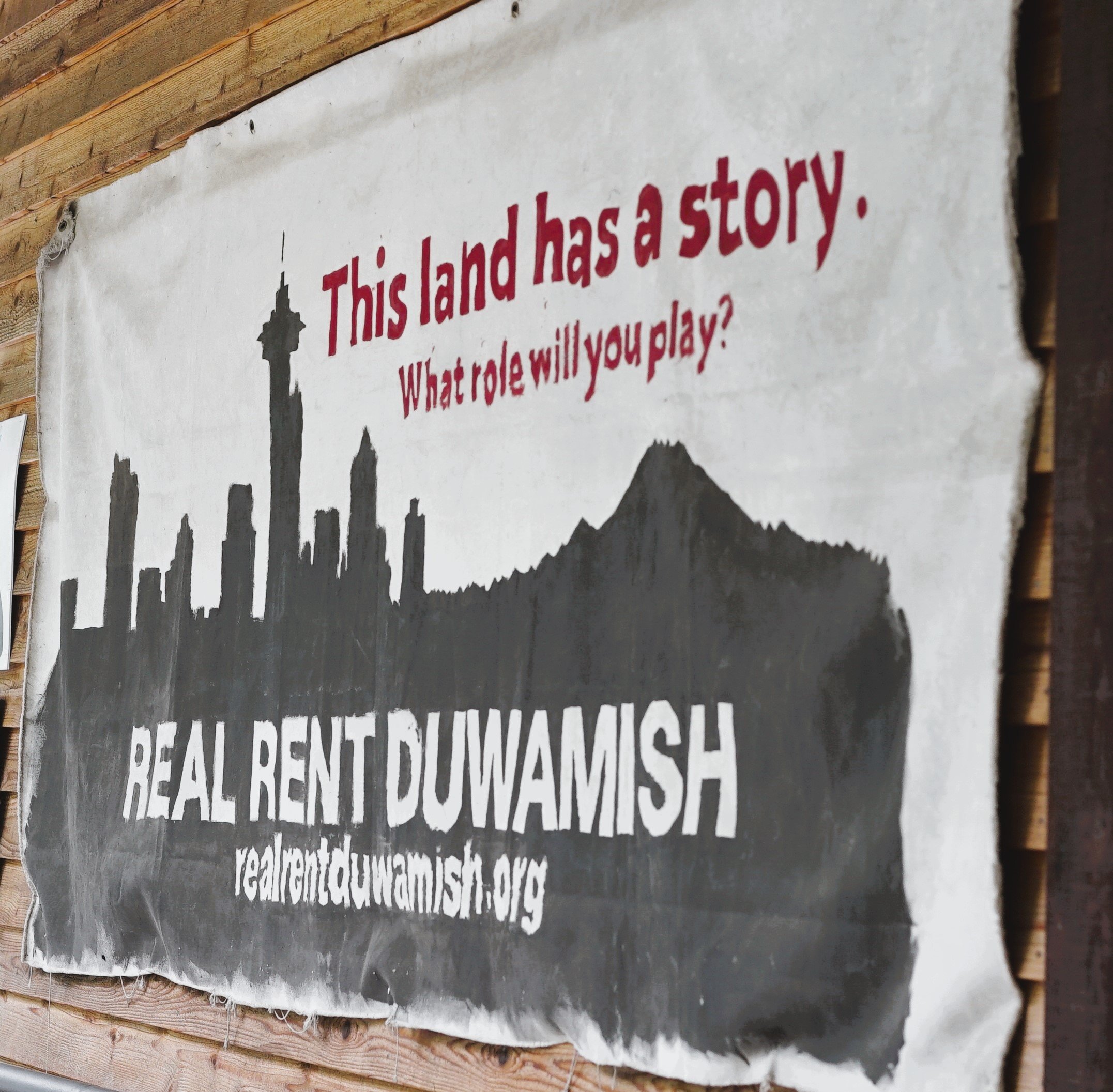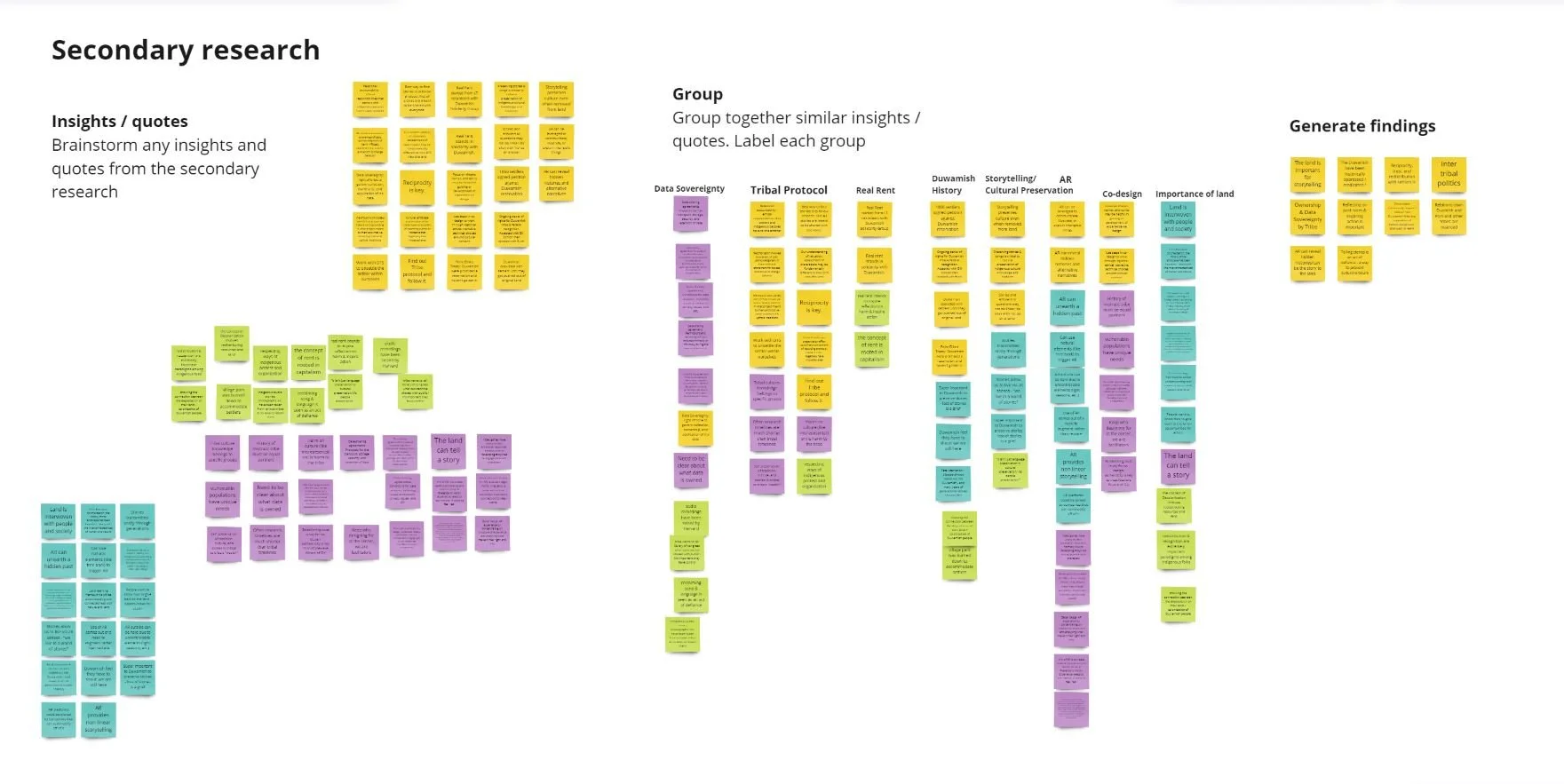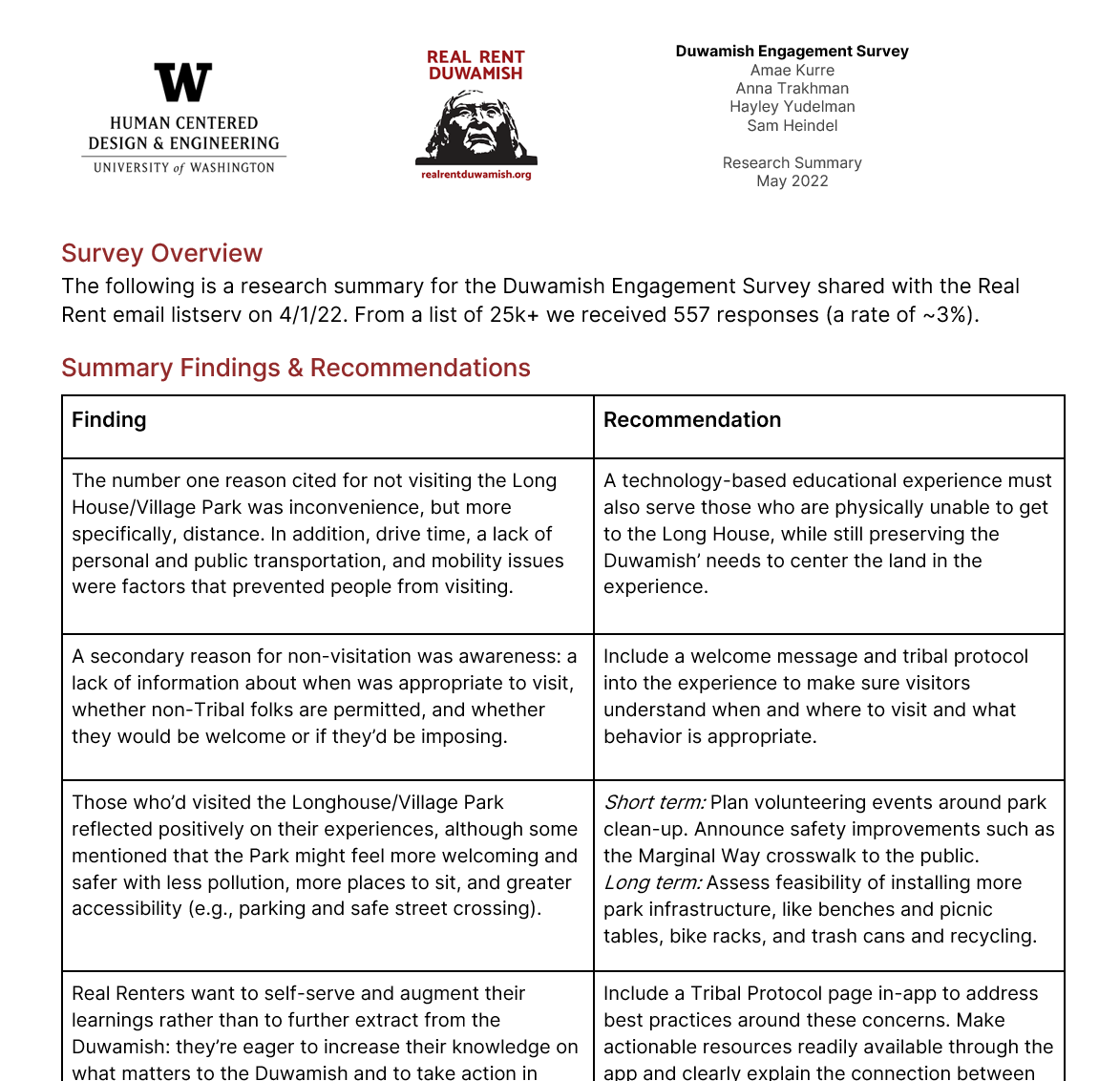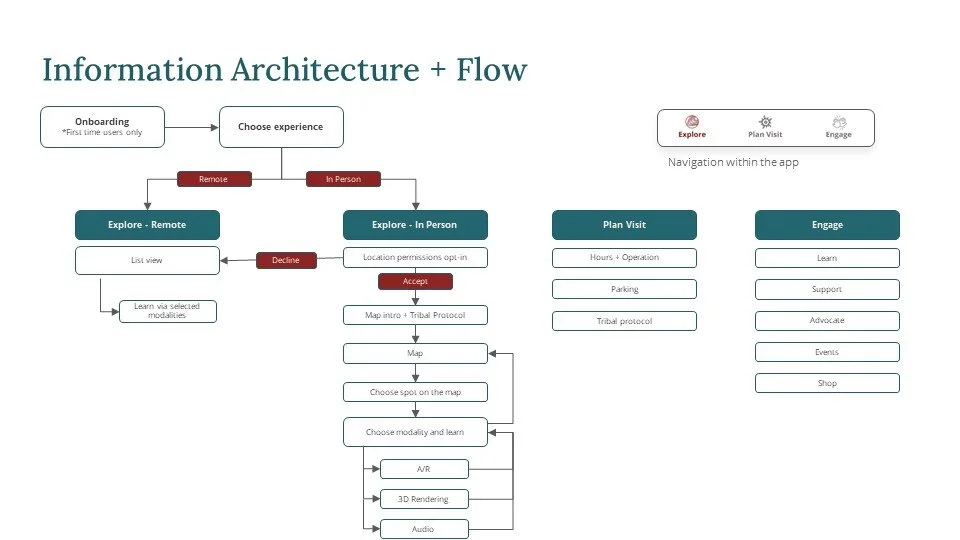University of Washington:
Capstone Project
Weaving Realities
My role: AR prototyping, Video Production, Project Management, UX Design
Duration: 6 months
Problem Statement
How might we use technology to tell the story of the Duwamish and reveal the hidden history of the land?
Background
Seattle sits on land that once belonged to the Duwamish and other indigenous peoples. Over time the Duwamish River has been vastly remade, straightened for shipping and industrialization. There is one remaining natural bend of the Duwamish River. The shoreline of this last riverbend is culturally significant and an ancestral site for the Duwamish but this land is owned by the Port of Seattle. The Port's ownership of this land prevents the Duwamish from placing signage in the park that would allow them to tell the story of the land and their people.
Solution
Augmented Reality (AR) has the power to reveal archaeological artifacts buried under the surface and is a solution to the limitations around placing signage in the park. Our team built and tested a prototype of a digital learning experience as a proof of concept for our client who had the idea to use AR to tell the Duwamish story. Prior to building a proof of concept, we conducted user research with visitors to determine whether there was a desire for a technology-based learning experience and whether Augmented Reality was useful and engaging to visitors.
Access the Final Prototype
Research
Working with an historically oppressed and marginalized people, it was necessary that this project be Duwamish-centered. It was of utmost importance to be partners and design with the Duwamish and not for them.
-
We interviewed Duwamish leaders and elders and learned the tribe already had many ideas for types of content to include in the experience.
Emphasis on not wasting their time and providing an actual end product.
Lack of trust for outside organizations.
-
Relationship building and protocol, such as land acknowledgements, are key elements of working with indigenous peoples.
We learned about Duwamish history and priorities. The tribe is not federally recognized; securing federal recognition is the tribe's top priority.
-
Collaborated with Duwamish leaders to conduct a survey that would meet both Tribal and project needs. Received 557 responses.
Key Findings:
There is strong desire among visitors to learn more about the Duwamish without placing a burden on tribal resources.
There are many barriers to visiting the park itself, such as limited public transportation, West Seattle Bridge closure and perceived safety of the neighborhood.
How this was implemented into our design:
Create a self-serve visitation experience; have the solution function both at the site but also have an online component for visitors that cannot get to the park
-
Team attended a scheduled bird watching event that had 100+ visitor attendees.
Conducted 6 Intercept Interviews
Great opportunity to observe existing visitor programming at the Longhouse and observe how visitors move through the space.
Key Findings
Validated that there is a desire amongst visitors to learn more about the Duwamish
Augmented Reality as a platform elicited mixed responses from visitors largely correlated with age, younger visitors were enthusiastic about AR and older visitors were skeptical.
Able to observe how visitors moved through the space and the way that the Longhouse and Visitor Center is disconnected from the river park and ancestral site, must cross busy road to access park, limited signage.
How this was implemented into our design:
Design solution should not be solely Augmented Reality, include multiple learning modalities to align with variability in visitor comfort using technology. Wayfinding is a key component since there is limited signage and the ideal visitor experience would occur in multiple places within a square mile radius
-
During a visit to St. Louis, I visited Cahokia Mounds, a UNESCO world heritage site of Native American earthen mounds. I interviewed users of the app who were first time Augmented Reality users to learn more about their experience and desire for AR. I recorded screen captures and brought back to the team.
Research Findings
Barriers to visitation
Our design solution balances the Duwamish’ desire to connect people with the land and the realities of challenges accessing the area. The experience includes a remote option for those who can’t visit in person. We also designed the app in such a way that it would entice people to visit.
Inspire Action
Visitors want to contribute to the Tribe’s goals, so we include easy access to other resources for getting involved.
Technology was met with mixed reactions
We included alternative and varying levels of immersion (such as audio) for those less enthused about an AR experience. This flexibility allowed our app to be inclusive to those who may find technology distracting or obtrusive when experiencing nature
Visitors aren’t sure if it’s for them
Design to make people feel welcome, include welcoming language and many access points to help people understand that they can come visit.
Analysis of secondary research findings
Show the hidden history of the land
For the Duwamish, the land holds stories. Augmented Reality and a digital experience can help tell the story of what’s hidden under the land or provide images of artifacts not in the Tribe’s possession
Self-serve Education
Visitors want to be mindful of the Tribe’s time and resource. They are open to technology as a way to learn more without taking away time from the tribe.
Report of survey findings presented to client
My Early Sketches
Information Architecture
Low-Fidelity Prototype
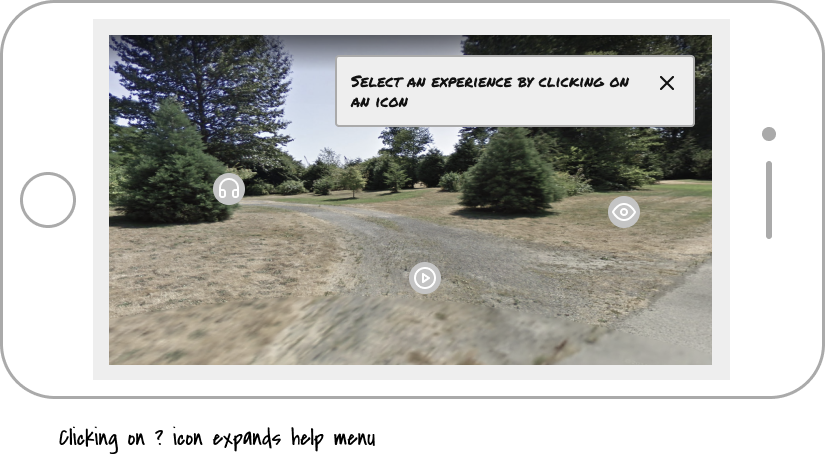
Menu for selecting modality

Static picture information board
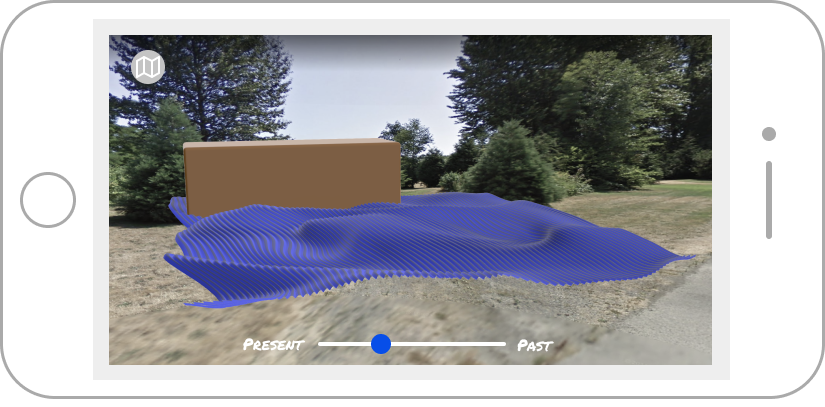
AR learning experience
High-Fidelity Prototype
Access the Final Prototype
